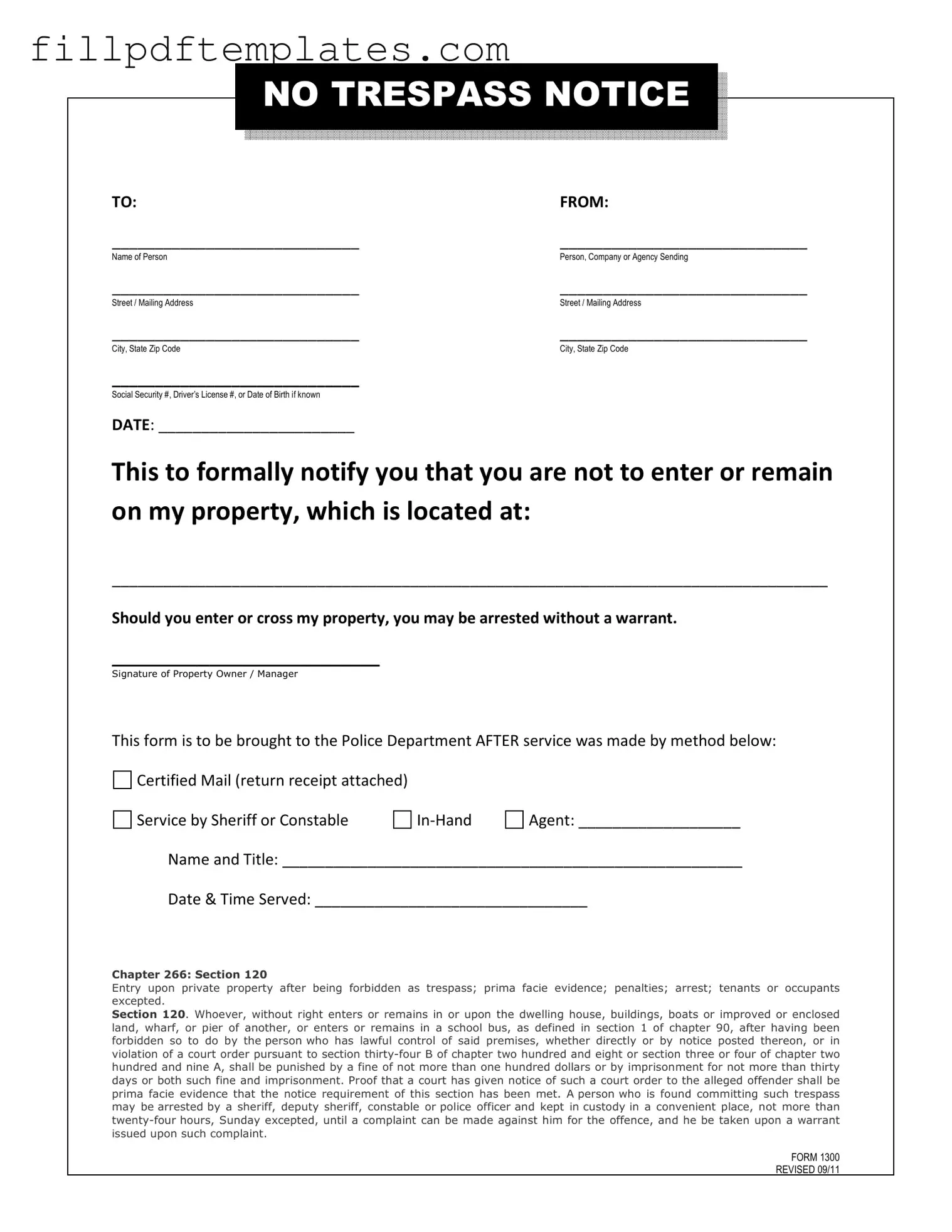When it comes to protecting your property rights, a No Trespassing Letter can be an essential tool. This straightforward document serves as a formal notice to individuals that they are not permitted to enter or remain on your property. It's important to clearly identify both the sender and the recipient, ensuring that all necessary contact information is included. The letter specifies the exact location of the property in question, which helps eliminate any confusion. Additionally, it outlines the consequences of trespassing, informing the recipient that they may face arrest without a warrant should they violate this notice. The form also includes a section for the method of delivery, whether it be through certified mail, service by a sheriff or constable, or in-hand delivery. This ensures that there is a record of the notification being served, which can be crucial if legal action becomes necessary. Lastly, the letter requires the name and title of the individual who served the notice, along with the date and time, providing a clear chain of accountability. Understanding how to properly utilize this form can help you assert your rights and maintain the security of your property.

